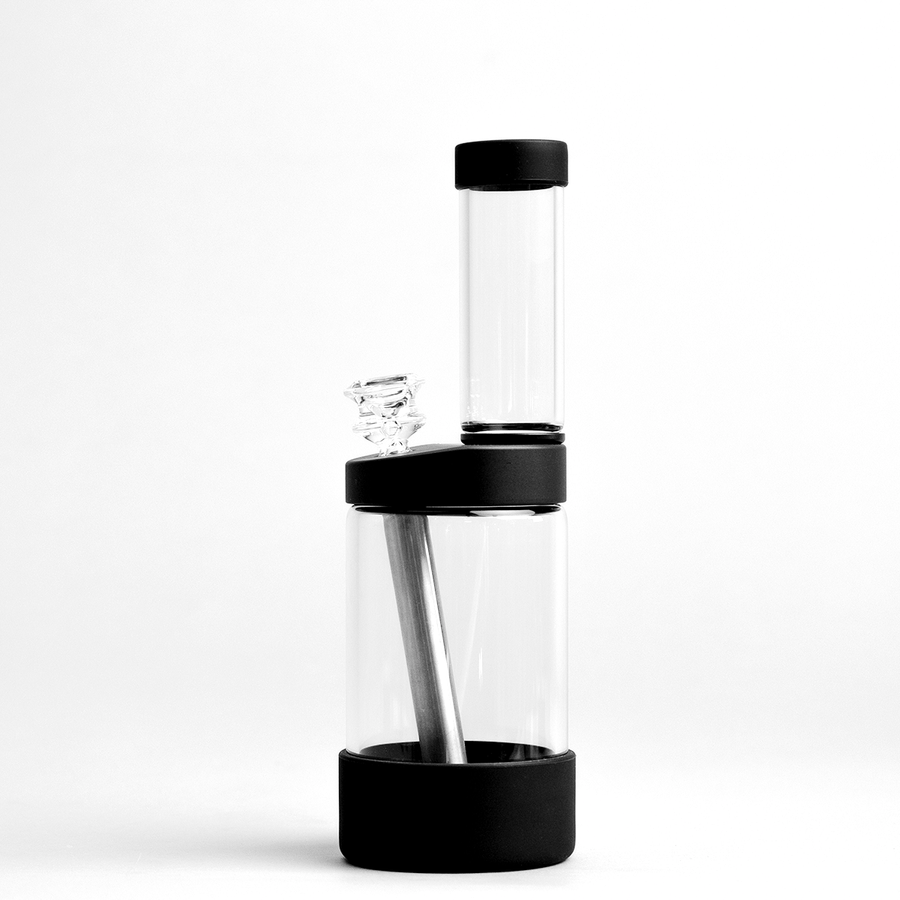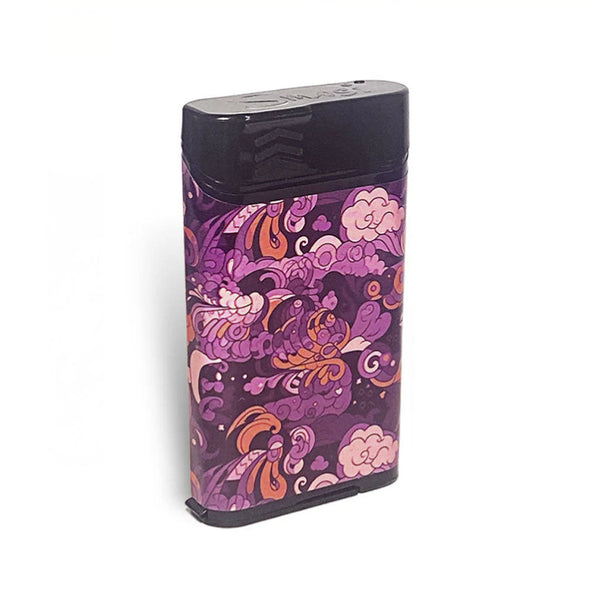How Much Mad Honey to Hallucinate? Exploring the Effects of Mad Honey Consumption

Curious about how much mad honey to hallucinate? Many people hear stories about this rare honey and its mind-altering effects. But figuring out the right amount to consume without crossing into dangerous territory can be tricky.
Mad honey, made from rhododendron nectar, contains grayanotoxins that cause hallucinations and other intense reactions. In small amounts, it may provide a psychedelic experience. Too much, though, could lead to nausea or even poisoning.
This blog explores everything you need to know about consuming mad honey safely. Learn its effects, the risks involved, and what dosage might trigger hallucinogenic sensations while staying cautious.
Keep reading for the full scoop!
What is Mad Honey?
Mad honey, also called "deli bal" in Turkish, comes from nectar collected by bees who feed on rhododendron flowers. This psychoactive honey contains grayanotoxins that make it both intoxicating and potentially dangerous.
Ancient texts first mentioned it in 401 B.C.E., showing its long history of use.
This toxic honey is famously pricey, costing around $166 per pound or up to $235 per kilo. Known for causing hallucinations and other effects, it is highly sought after despite the risks.
">“Mad honey offers a mind-altering experience but demands caution due to its toxicity.”.
Key Components of Mad Honey
Mad honey owes its unique effects to specific compounds found in its makeup. Understanding these components helps explain why this honey can influence the mind and body so powerfully.
Grayanotoxins and Their Effects
Grayanotoxins disrupt sodium ion channels in the body, causing issues in the nervous, respiratory, and cardiovascular systems. These toxins overstimulate nerve cells, leading to symptoms like dizziness, nausea, and confusion.
At least 18 forms of grayanotoxin exist. Grayanotoxins I, II, and III are linked specifically to cardiac effects such as slowed heart rate or irregular rhythms. In severe cases, these effects can mimic symptoms of acute coronary syndrome or organophosphate poisoning.
The metabolism of grayanotoxins occurs within 24 hours of ingestion. This process limits how long symptoms last but does not reduce their intensity during that period. The toxic impact depends on the amount consumed and an individual’s health condition.
Respiratory distress may also arise due to excessive intake since these toxins interfere with proper breathing functions. Understanding grayanotoxin behavior helps explain mad honey's unique properties and potency when sourced from specific plants.
Sources of Mad Honey
Mad honey production depends on the rhododendron flowers that grow in certain regions. These flowers, rich in grayanotoxins, thrive in Turkey’s Black Sea area, especially around the Kakar Mountains.
This region has become one of the most famous sources for mad honey due to its dense rhododendron forests.
Nepal is another major producer of this toxic honey. Honey hunters there scale dangerous cliffs using bamboo ladders to gather it from wild hives, often referred to as cliff honey.
In the U.S., smaller quantities may occur naturally in areas like the Appalachian Mountains when bees collect nectar from native plants containing these toxins.
Nature plays a crucial role in crafting this rare and powerful substance.
How Much Mad Honey is Needed to Hallucinate?
The amount of mad honey required to induce hallucinations varies based on its grayanotoxin concentration. Individual tolerance and body chemistry also play critical roles in determining the effects.
Typical Dosage for Hallucinogenic Effects
Consuming 15-30 grams of mad honey, roughly 1-2 teaspoons, can lead to hallucinogenic effects. Symptoms typically appear within 30 minutes and may last up to four hours.
This amount contains enough grayanotoxins to trigger mild psychedelic experiences in most people. Commercial mad honey often has diluted toxin levels, so fatal overdoses are rare but still possible with excessive intake.
Factors Influencing Individual Response
The amount of mad honey needed to cause hallucinations can differ. Several factors affect how an individual's body reacts to this unique substance.
- Body weight significantly impacts how much mad honey a person can handle. Heavier individuals may require higher doses to experience effects.
- Age plays a crucial role in sensitivity to grayanotoxins. Men aged 40-60 report more frequent poisoning symptoms compared to other age groups.
- Long-term use may lower the severity of symptoms over time. This occurs because sodium channels could become desensitized with repeated consumption.
- Spring honey tends to have higher toxicity levels due to seasonal rhododendron blooms, which increase grayanotoxin content in the nectar.
- A person's tolerance for natural toxins might influence their reaction to mad honey. Those with prior exposure may handle it better than first-time users.
- Gender differences also seem significant in responses, as men tend to show different reactions or symptom patterns compared to women.
- The source of the mad honey matters, as purity and quality vary depending on where beekeepers harvest it from specific plants like rhododendrons.
- Individual health conditions further affect responses, particularly for those with heart issues or hypersensitivity to toxins present in the honey.
- Quantity consumed directly influences hallucinogenic effects or toxicity risks, especially if one exceeds safe limits without proper supervision.
- Seasonal variations impact potency due to fluctuating levels of grayanotoxins in flowers at different times of the year, particularly during spring months when blooms peak.
Effects of Consuming Mad Honey
Consuming mad honey triggers unique psychotropic effects due to the presence of grayanotoxins. These effects vary based on dosage and individual sensitivity.
Mild Hallucinogenic Effects
Mad honey causes mild hallucinations due to grayanotoxin, a neurotoxic compound. Users may experience visual distortions like blurred vision or heightened colors. Psychoactive effects can vary but may include feelings of euphoria or dream-like states.
Historical accounts highlight its potency. In 401 B.C.E., Greek soldiers led by Xenophon reported confusion and dizziness after eating toxic honey. Roman troops in 67 B.C.E. also suffered hallucinogenic symptoms from honey made near rhododendron-filled regions.
Physical Symptoms (e.g., dizziness, nausea)
The consumption of mad honey can trigger several physical symptoms. These effects stem from grayanotoxins, which impact the nervous and cardiovascular systems.
- Dizziness may occur due to the neurotoxic properties of grayanotoxins. This can make standing or walking difficult.
- Nausea often follows after ingestion, leading to discomfort in the stomach area.
- Vomiting is a common response as the body tries to expel toxins naturally.
- Low blood pressure sets in quickly, causing weakness or faintness in some individuals.
- Bradycardia, or abnormally slow heart rate, appears in roughly 90% of cases involving mad honey poisoning.
- Upset stomach becomes apparent within hours, adding to feelings of unease.
- A sensation of vertigo can cause disorientation and imbalance.
- Fainting occasionally results from reduced oxygen flow caused by slowed heartbeat and low blood pressure.
- Seizures only present in severe cases but indicate serious toxic reactions.
- Stomach discomfort lingers for hours as digestion attempts to process toxins.
Understanding these symptoms helps users gauge mad honey’s risks before use and transitions into recognizing its hallucinogenic effects next.
Duration of Effects
Symptoms from mad honey consumption can appear within 30 minutes to 4 hours. The onset of symptoms varies depending on the dosage and individual tolerance levels. Mild hallucinogenic effects may combine with physical symptoms like dizziness or nausea during this timeframe.
Recovery often occurs within 24 hours, but emergency monitoring for at least 6 hours is recommended if toxicity arises. Timely observation ensures that more severe reactions are addressed promptly.
Risks and Side Effects of Mad Honey
Consuming mad honey carries serious health risks, including potential toxicity that demands careful attention—read on to understand its dangers.
Potential for Toxicity and Overdose
Grayanotoxins in mad honey can quickly lead to hazardous ingestion if consumed in high amounts. Toxicity begins at low doses, with adverse effects like extreme dizziness, vomiting, or diarrhea.
Overdose risks increase significantly when taken without moderation and can cause heart rhythm problems or dangerously low blood pressure. Reports from Lanping County, China, between 2007 and 2012 revealed a shocking 25.8% mortality rate due to wild honey poisoning.
South Korea banned mad honey imports after a fatal case linked to over 8 tons of shipments from Nepal between 2003 and 2004. This highlights the real danger of overdose with even small miscalculations in dosage.
Fatal reactions remain possible for those trying to push limits with hallucinogenic effects, making responsible use critical for safety.
Symptoms of Mad Honey Poisoning
Toxicity and overdose risks from mad honey directly relate to its active compounds. Understanding symptoms of poisoning can help users identify early signs of adverse reactions.
- Users may experience bradycardia, which causes an abnormally slow heart rate. This can feel like fatigue or weakness in many cases.
- Hypotension is a common symptom, leading to dangerously low blood pressure. This might result in lightheadedness or fainting.
- Some people report syncope, or sudden loss of consciousness. This often occurs due to reduced blood flow to the brain.
- Chest pain can develop as grayanotoxins affect cardiovascular function. This symptom should not be ignored and may require urgent care.
- Gastrointestinal cramps are frequently noted after overconsumption. These cramps might also trigger nausea and vomiting.
- Confusion or disorientation signals potential neurological effects from grayanotoxins. Vertigo often accompanies these symptoms.
- Severe cases may lead to atrial fibrillation, causing rapid and irregular heart rhythms. This could escalate into heart block without timely intervention.
- Kounis syndrome, linked to allergic responses, can emerge in rare instances. It combines cardiac issues with inflammatory responses caused by toxins.
Long-term Health Concerns
Prolonged use of mad honey may lead to sodium channel desensitization. This can reduce the severity of symptoms over time but may also alter the body’s natural response to its effects.
Though most symptoms resolve within 24 hours, historical fatalities and isolated incidents in China highlight potential risks with misuse.
There is no evidence of chronic health concerns from moderate consumption, but lasting side effects could arise with repeated excessive use. Reports suggest careful monitoring to avoid adverse effects linked to toxicity and long-term consequences.
Safe Consumption Practices
Understanding how much mad honey to consume is essential for a safe experience. Follow practices that prioritize moderation and informed decisions.
Recommended Dosage Guidelines
Consuming 15 to 30 grams of mad honey—about 1 to 2 teaspoons—may trigger hallucinogenic effects. Beginners should start with smaller amounts, such as half a teaspoon, and assess their body’s reaction.
Overconsumption can lead to dizziness or nausea, so proper usage guidelines must be followed.
Safe dosing guidelines suggest waiting at least six hours before taking more. This allows time for monitoring any physical symptoms and preventing toxic reactions. Responsible intake practices also include consuming it under supervision for added safety.
Importance of Supervision and Moderation
Supervision and moderation play a critical role in the safe use of mad honey. The historical use of this substance as a weapon by Mithridates IV against Roman soldiers in 67 B.C.E.
highlights its potency. Consuming too much can lead to severe toxicity, including symptoms like nausea, dizziness, and hallucinations.
Proper oversight ensures controlled usage and minimizes risks of poisoning or overdose. Individuals must monitor their intake carefully since even small amounts can cause unpredictable reactions.
Guidance from experienced users or professionals helps maintain safety while exploring its effects responsibly.
Legal Status and Availability
Mad honey's legality varies across different countries and regions. Accessing authentic mad honey can be challenging due to its limited production and specific origins.
Countries Where Mad Honey is Legal
Mad honey, containing grayanotoxins, has unique legal status across the globe. Some countries allow its use, while others have stricter regulations due to health risks.
- Turkey produces most of the world’s mad honey and has a long history of its use. Turkish researchers documented 69 out of 84 studies on mad honey poisoning.
- Nepal is another major source where locals harvest toxic honey from cliff-dwelling bees.
- The United States allows limited availability of mad honey for personal use and research purposes.
- Brazil records incidents of mad honey consumption but does not strictly regulate it.
- Austria and Germany report cases of poisoning but do not have specific bans on selling or importing it.
- China, Japan, and South Korea allow its presence in certain regions but caution against misuse because of the potential toxicity.
- Global regulations vary widely depending on cultural norms and awareness of grayanotoxin-related risks.
- Authentic mad honey can be difficult to find due to strict controls in some nations and counterfeit products in the market.
Challenges in Obtaining Authentic Mad Honey
Finding genuine mad honey can be difficult due to fake or diluted products flooding the market. Many sellers mislabel their items, making it hard for buyers to ensure quality. Authentic mad honey comes from specific regions, like Turkey and Nepal, where bees collect nectar from rhododendron flowers.
The high price adds another challenge, with a pound costing around $166 or 3,500 Turkish lira per kilo. This cost makes some buyers wary of scams when sourcing pure mad honey. Strict legal regulations in certain countries further limit its availability, forcing many to rely on less trustworthy online sources.
Conclusion
Consuming mad honey can produce wild effects, but it’s not without risks. Even small amounts may trigger hallucinations and physical symptoms like nausea or dizziness. The potency depends on factors like the source of the honey and individual tolerance.
Anyone curious about trying it should prioritize safety and moderation. Always approach this rare treat with caution to avoid dangerous side effects.
FAQs
1. What is mad honey, and why does it cause hallucinations?
Mad honey comes from nectar collected by bees from rhododendron flowers. It contains grayanotoxins, which can affect the nervous system and may lead to hallucinations when consumed in high amounts.
2. How much mad honey should someone consume to experience its effects?
The amount needed varies based on body weight and tolerance. Generally, 1-2 teaspoons may produce mild effects, while larger doses increase the risk of stronger reactions or toxicity.
3. Is consuming mad honey safe for everyone?
No, mad honey can be dangerous if overused or misused. It might cause side effects like dizziness, nausea, low blood pressure, or even serious health risks for some individuals.
4. Are there any medical uses for mad honey?
In small quantities, people have used it traditionally as a natural remedy for issues like hypertension and fatigue. However, misuse could outweigh potential benefits due to its toxic nature. Always consult a doctor before use.






![Vessel Helix Pipe [Copper] - Headshop.com](http://www.headshop.com/cdn/shop/files/ad3c0443-b76d-4fe5-84b8-a617dd50a950.jpg?v=1747419387&width=900)
![Vessel Helix Pipe [Copper] - Headshop.com](http://www.headshop.com/cdn/shop/files/7b0e06e3-9106-4684-80e4-408362c34085.jpg?v=1747419388&width=1000)
![Vessel Wood Vape Pen Battery [White/Beechwood] + - Headshop.com](http://www.headshop.com/cdn/shop/files/4ecd5d0f-363a-454e-a7a0-229fb93bf456.jpg?v=1725470645&width=900)
![Vessel Wood Vape Pen Battery [White/Beechwood] + - Headshop.com](http://www.headshop.com/cdn/shop/files/d232e493-09e6-4574-b44c-3e2bde9425b4.jpg?v=1725470647&width=1000)


![Vessel Compass Apex Charger [Black] - Headshop.com](http://www.headshop.com/cdn/shop/files/f10e6bf4-6ce7-4a59-a50e-a4184f069754.jpg?v=1729115238&width=900)
![Vessel Compass Apex Charger [Black] - Headshop.com](http://www.headshop.com/cdn/shop/files/dce98c70-346c-405f-aca8-d59c7feed96d.jpg?v=1729115240&width=1000)

![Vessel - Cone [Onyx] Vessel - Cone [Onyx]](http://www.headshop.com/cdn/shop/products/6f51074a-2173-4ab4-876d-22a84764eb5d.png?v=1679517316&width=600)
![Vessel - Mill [Beechwood] Vessel - Mill [Beechwood]](http://www.headshop.com/cdn/shop/files/MILL_GUNMETAL_BEECH_COLLAPSED_FRONT_800.jpg?v=1744308513&width=600)

![Pipe by Vessel [Rose Gold] Pipe by Vessel [Rose Gold]](http://www.headshop.com/cdn/shop/files/Pipe_Rose_Gold_Closed.jpg?v=1744306576&width=600)
![Vessel - Air [Jade] Vessel - Air [Jade]](http://www.headshop.com/cdn/shop/products/7cd436a1-b1f0-4e01-9e52-050ad7140b56.png?v=1679506090&width=600)
![Vessel Helix Pipe [Black] - Headshop.com](http://www.headshop.com/cdn/shop/files/Pipe_Black_Angle.jpg?v=1744306153&width=900)
![Vessel Helix Pipe [Black] - Headshop.com](http://www.headshop.com/cdn/shop/files/Pipe_Black_Closed.jpg?v=1744306155&width=1000)
![Vessel Compass Rise Vape Bar [Crimson] - Headshop.com](http://www.headshop.com/cdn/shop/files/fc3fd52a-2783-4fac-bd38-bc4f2013a889_5466b32d-da71-427f-8737-bf7d7f5f2c77.jpg?v=1735253136&width=900)
![Vessel Compass Rise Vape Bar [Crimson] - Headshop.com](http://www.headshop.com/cdn/shop/files/66947a99-195c-4deb-b29e-03443ebebd5a_32c35e3d-ba1b-4d4d-a879-3886d37bddf7.jpg?v=1735253136&width=1000)


![Vessel - Ember [Gold] Astray - Headshop.com](http://www.headshop.com/cdn/shop/files/20220106_EMBER_BRASS.jpg?v=1744309601&width=900)
![Vessel - Ember [Gold] Astray - Headshop.com](http://www.headshop.com/cdn/shop/files/20220106_EMBER_BRASS_WITH_AIR.jpg?v=1744309601&width=1000)








![Pipe by Vessel [Gunmetal]](https://cdn.shopify.com/s/files/1/0585/8462/9443/files/Pipe_Gunmetal_Angle_500x500.jpg?v=1744306453)













